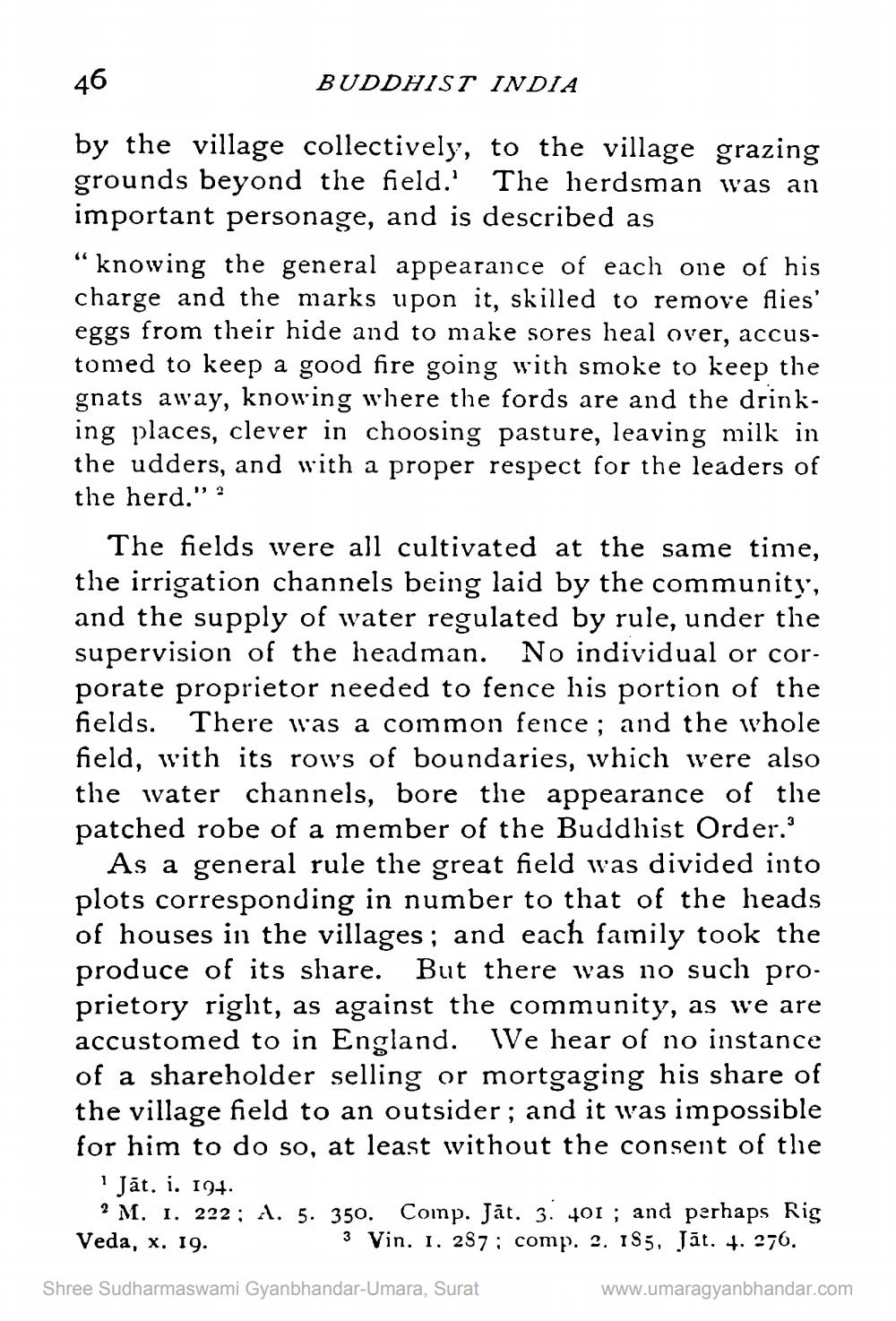________________
46
BUDDHIST INDIA
by the village collectively, to the village grazing grounds beyond the field. The herdsman was an important personage, and is described as “knowing the general appearance of each one of his charge and the marks upon it, skilled to remove Aies' eggs from their hide and to make sores heal over, accustomed to keep a good fire going with smoke to keep the gnats away, knowing where the fords are and the drinking places, clever in choosing pasture, leaving milk in the udders, and with a proper respect for the leaders of the herd." ;
The fields were all cultivated at the same time, the irrigation channels being laid by the community', and the supply of water regulated by rule, under the supervision of the headman. No individual or corporate proprietor needed to fence his portion of the fields. There was a common fence; and the whole field, with its rows of boundaries, which were also the water channels, bore the appearance of the patched robe of a member of the Buddhist Order.:
As a general rule the great field was divided into plots corresponding in number to that of the heads of houses in the villages; and each fainily took the produce of its share. But there was no such proprietory right, as against the community, as we are accustomed to in England. We hear of no instance of a shareholder selling or mortgaging his share of the village field to an outsider; and it was impossible for him to do so, at least without the consent of the
? Jāt. i. 194.
? M. I. 222; A. 5. 350. Comp. Jåt. 3. 401 ; and perhaps Rig Veda, x, 19.
3 Vin. 1. 287; comp. 2. 185. Jāt. t. 276.
Shree Sudharmaswami Gyanbhandar-Umara, Surat
www.umaragyanbhandar.com




